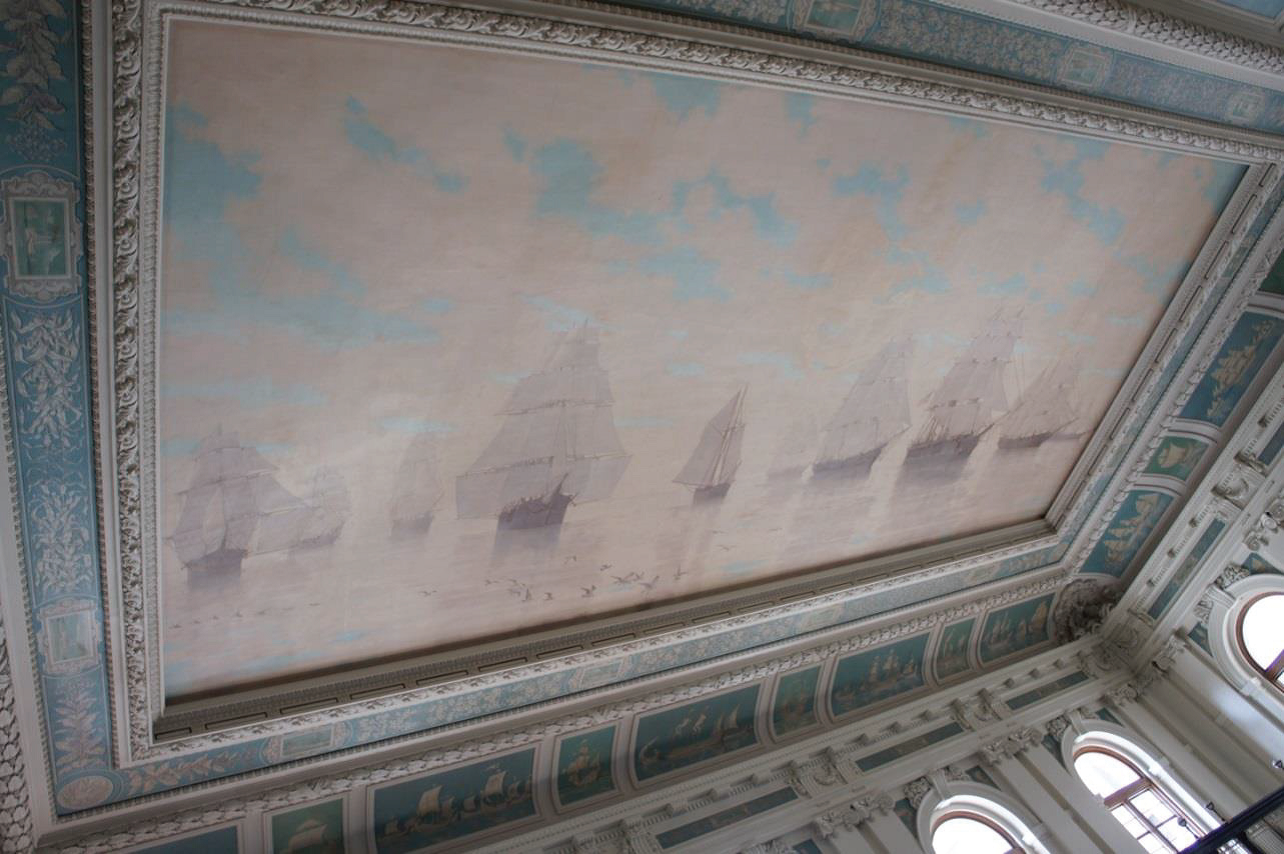
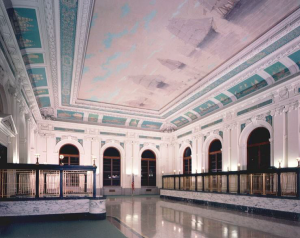 Baltimore Customs House Murals
Baltimore Customs House Murals
Date: 1900
Dimensions: Entering the Harbor: Height: 112 cm (44.25 in) Width: 236 cm (93 in) Multiple murals and frescos: variety of sizes
Medium: Painting – oil on canvas and frescos
Owner/Location: Baltimore Customs House, Baltimore, Maryland
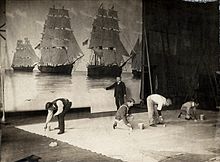
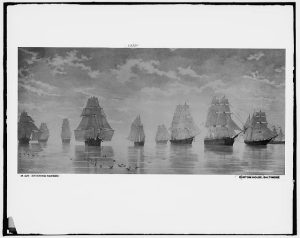
Study for “Entering the Harbor” Ceiling Mural
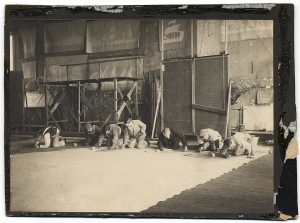
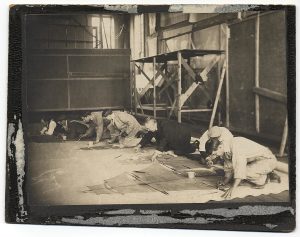
Millet and assistants painting “Entering the Harbor”
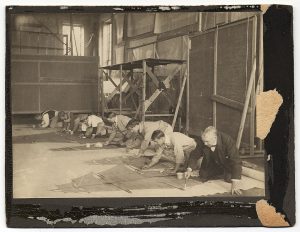
Painting “Entering the Harbor” in the Broadway, England, Grange Studio, behind Russell House the Millet’s English home.
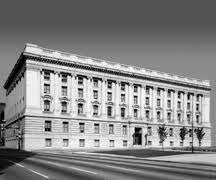
Customs House building, Baltimore, Maryland
Description
Study for Entering the Harbor: Signed F.D. Millet on ship pennant, center right
The present work is a preliminary study for the murals that decorate the Call Room of the Baltimore Customhouse. The monumental murals, for which Millet became famous, represent The Evolution of Navigation, from the earliest Egyptian river boats to the most modern vessel at the time. Tragically, Millet died in 1912 in the sinking of the Titanic. – Sotheby’s Note
The Call Room, where sea captains from around the world cleared their cargoes with customs officials, is decorated with murals by Francis Davis Millet. They depict a fleet of ships entering the harbor of Baltimore and an accurate visual history of the evolution of navigation. Considered to be among Millet’s finest, and a major significance in the history of American mural painting, the murals have recently been restored to their original splendor.
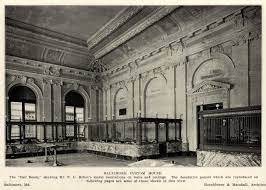
The United States Customs House is considered one of the Nation’s finest examples of Beaux-Arts architecture. Its monumental and Classical design symbolized the commercial glory of America and the Port of Baltimore. Baltimore’s original customs office was chartered in 1786, three years before the creation of the United States Customs. The present building replaced the quarters of the United States Customs that had existed from 1820-1900 on the same site in the Merchant’s Exchange, a building designed by Maximilien Godefroy and Benjamin H. Latrobe in 1816. In 1865 President Abraham Lincoln’s bier lay in state under the dome of the Merchant’s Exchange.

Ceiling of Customs House, showing some of the lunettes around the room and a partial view of “Entering the Harbor” mounted on the ceiling.

The “Mauretania” doorway lunette as they were restored in 1974 as a National Historic Landmark.
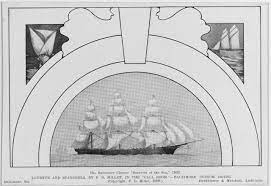
Clipper ship detail.
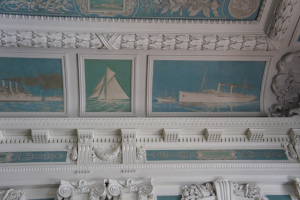
The Cup-Defender, “Reliance,”’ and ‘The Steam Yacht “Kanawha,” the “St.Paul” of the American Line
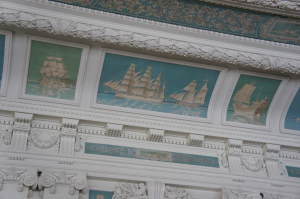
“A Liverpool packet and tug, 1840,” ‘The “Great Republic,” the first large vessel to use double topsails, 1853; the schooner “H. H. Cole, 1843,” “A Chinese Junk, 1825”
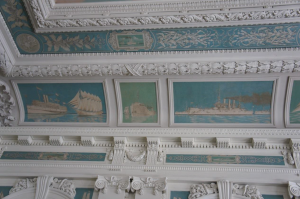
The “Priscilla,” a Long Island Sound Steamer, 1894, a six-masted schooner, 1895,”’ ‘A Great-Lakes Schooner, the “Amasa Stone,” a Great-Lakes ore carrier,’ and “The “Olympia,” Admiral Dewey’s flag-ship
The following links will enable the reader to get a detailed report of the entire mural project and the history of the Customs House:
Architectural Record, Leila Mechlin, July 1908, Vol XXIV No.1, pages 5, 98-108
Website devoted to the history of the Customs House,
http://bcbfa.org/home/about-us/
Exhibitions / Provenance
Exhibitions:
Study for Entering the Harbor: Jersey City, New Jersey, Jersey City Museum, Heroes in the Fight for Beauty: The Muralists of the Hudson County Court House, December 18, 1985-March 15, 1986, no. 71
Provenance:
Private Collection, Washington D.C.
Literature
Research:
Publications:
